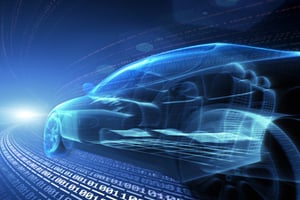
Autonomous Vehicles: Reshaping IT Infrastructure
In the not-so-distant past, autonomous vehicles were mere figments of our imaginations. They were nothing more than a fanciful concept like flying cars and personal flight suits you’d see only in sci-fi films or magazines.
How times have changed. Today, thanks to the investments and talents of transportation and technology luminaries, driverless vehicles have logged more than 8 million test miles on public roads and are expected to make up nearly one-quarter of the global vehicle market by 2040.
While truly autonomous cars and trucks are still a ways off from dominating the roadways, by 2020 there could be as many as 250 million connected vehicles on the road as manufacturers and governments seek to improve travel efficiency, safety, and the overall driver (and passenger) experience.
But while companies continue to make headway in advancing the technologies that enable full autonomy, they’re still at the mercy of limitations of other technologies, namely computing power and capacity.
Transitioning From Organic to Machine-Powered Networks
Self-driving vehicles aren’t powered by magic. They’re powered by data, and lots of it. By some estimates, connected cars already generate as much as 25GB of data per hour—produced by as many as 40 microprocessors and dozens of sensors that collect data on everything from GPS locations and vehicle speed cross-referenced with on-board diagnostics to individual driver behaviors and preferences.
Unlike human-driven automobiles whose speed, direction, and routes for safe arrival at a destination are dictated by a driver’s organic neural network – autonomous vehicles will be powered by cloud-based machine networks that depend on aggregating, analyzing, and transmitting data in real-time to operate properly and safely.
But conventional business-class data management practices aren’t suited to handling the massive volumes of data produced by connected or autonomous vehicles. Traditional IT infrastructure in corporate data centers designed for hosting and protecting financial transactions or healthcare information wasn’t intended for the enormous compute power and storage capacity connected vehicles require. It also generally lacks the low-latency connectivity, easy updates, and unbreakable data security measures required to keep automotive systems running at peak performance and safety.
The New Speed Limit: Latency
Perhaps more than any other industry, autonomous vehicles are highly latency sensitive. All the data collected from on-board processors and external sources like roadside monitors, GPS, and other vehicles must be aggregated, analyzed, and transmitted in real-time without fail. Even the slightest delay in any of those processes can radically change the driving experience for the worse.
As such, automotive companies must invest in technologies which have superior connectivity, exponential compute power and storage capacity, and low-latency from the close proximity of data sources and their users. They must realize that to reliably and securely store huge volumes of data, divine intelligence from that information, and instantly connect vehicles with data sources and each other they’ll need to rethink how to access that technology, which will almost certainly not be by themselves.
Instead, they’ll need to curate a network of colocation partners with low-latency systems and cloud connections, along with the on-demand scalability to support virtually any amount of data the roadways of the future will command. To that end, hybrid-ready data centers will be the conduit for our transition from human-driven to driverless, fully autonomous vehicles.
At the Edge of a Breakthrough
Beyond the power and density of modern physical data center facilities, hybrid data centers provide access to near-infinite additional compute and storage capacity through direct connections to the enormous reserves of public cloud providers like AWS, Google, and Azure.
But the real difference maker — what will ultimately enable the dream of full autonomy to become reality — is the additional compute and storage capacity available at strategically located edge facilities in other availability zones that enable processing information closer to the user, dramatically reducing latency by as much as 50 percent.
Edge computing will simplify and accelerate processing and finding patterns in on-board sensor data using artificial intelligence and machine learning applications. Moreover, keeping sensor data closer to the vehicles means less time spent waiting for data to make a driving decision. Edge computing is what will enable cars to talk to traffic signals in real-time to stop or start, or communicate road accidents much quicker than currently possible, according to some industry experts.
As automotive technologies and other “smart” elements of the transportation apparatus continue to evolve, so too must the infrastructure behind it. Hybrid-ready data centers will provide the scale, capacity, power, and connectivity required to make an idea that was once just a dream the norm of our everyday reality.
Know More
Contact us today to learn more about how CoreSite’s comprehensive suite of colocation and cloud connectivity solutions are powering innovation and tomorrow’s technologies.










